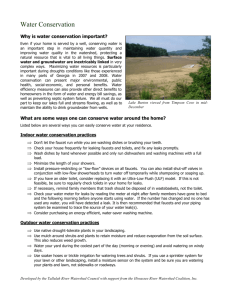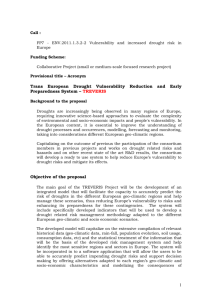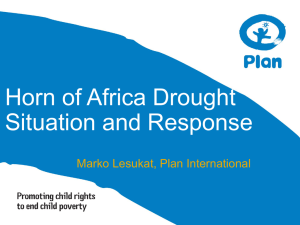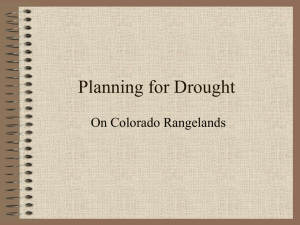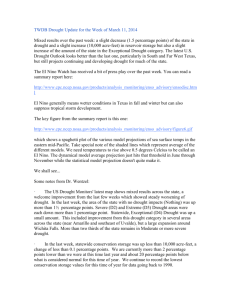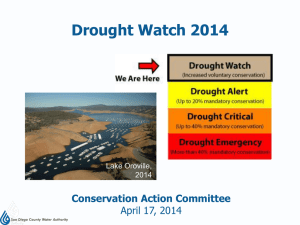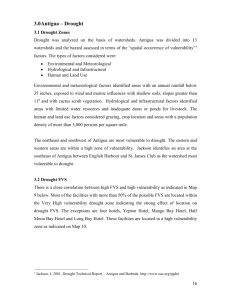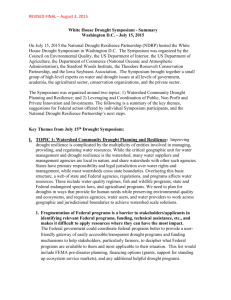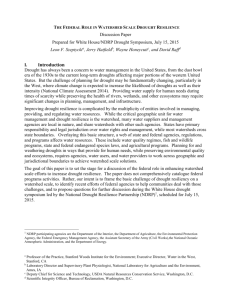Drought Task Force Handout - Beaverhead Watershed Committee
advertisement
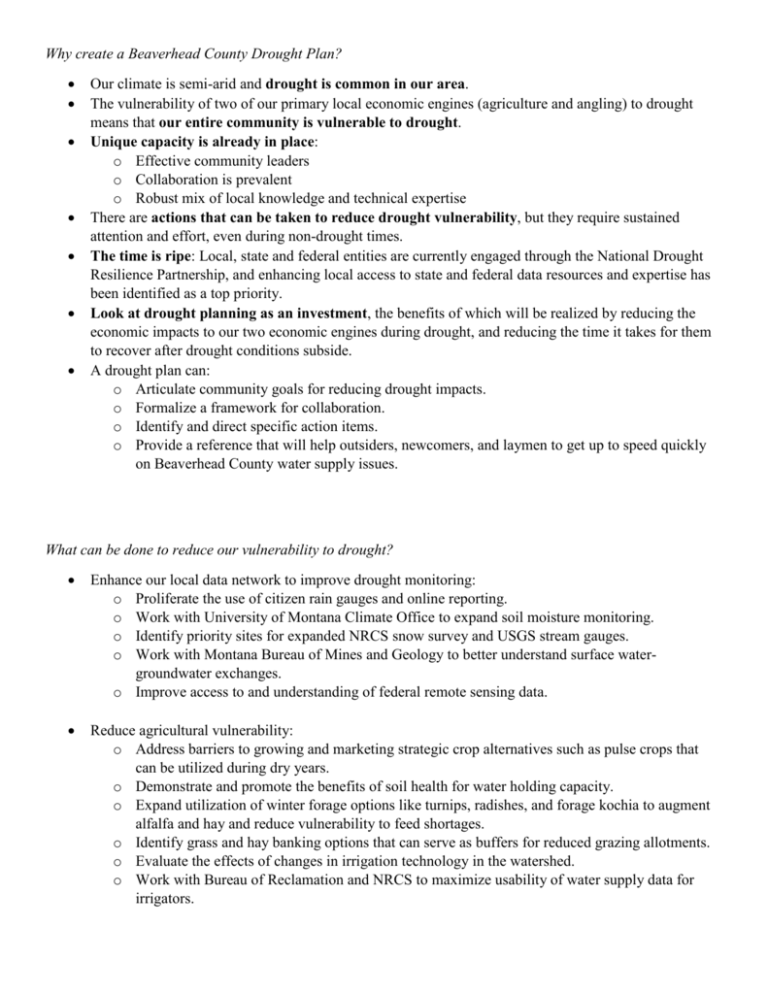
Why create a Beaverhead County Drought Plan? Our climate is semi-arid and drought is common in our area. The vulnerability of two of our primary local economic engines (agriculture and angling) to drought means that our entire community is vulnerable to drought. Unique capacity is already in place: o Effective community leaders o Collaboration is prevalent o Robust mix of local knowledge and technical expertise There are actions that can be taken to reduce drought vulnerability, but they require sustained attention and effort, even during non-drought times. The time is ripe: Local, state and federal entities are currently engaged through the National Drought Resilience Partnership, and enhancing local access to state and federal data resources and expertise has been identified as a top priority. Look at drought planning as an investment, the benefits of which will be realized by reducing the economic impacts to our two economic engines during drought, and reducing the time it takes for them to recover after drought conditions subside. A drought plan can: o Articulate community goals for reducing drought impacts. o Formalize a framework for collaboration. o Identify and direct specific action items. o Provide a reference that will help outsiders, newcomers, and laymen to get up to speed quickly on Beaverhead County water supply issues. What can be done to reduce our vulnerability to drought? Enhance our local data network to improve drought monitoring: o Proliferate the use of citizen rain gauges and online reporting. o Work with University of Montana Climate Office to expand soil moisture monitoring. o Identify priority sites for expanded NRCS snow survey and USGS stream gauges. o Work with Montana Bureau of Mines and Geology to better understand surface watergroundwater exchanges. o Improve access to and understanding of federal remote sensing data. Reduce agricultural vulnerability: o Address barriers to growing and marketing strategic crop alternatives such as pulse crops that can be utilized during dry years. o Demonstrate and promote the benefits of soil health for water holding capacity. o Expand utilization of winter forage options like turnips, radishes, and forage kochia to augment alfalfa and hay and reduce vulnerability to feed shortages. o Identify grass and hay banking options that can serve as buffers for reduced grazing allotments. o Evaluate the effects of changes in irrigation technology in the watershed. o Work with Bureau of Reclamation and NRCS to maximize usability of water supply data for irrigators. Expand water supply: o Engage U.S. Army Corps of Engineers about storing more water into the flood pool at Clark Canyon Reservoir during wet years. o Target areas for thinning forest to increase runoff, reduce wildfire risk, and combat insect infestation. o Experiment with small scale source water storage options which may raise groundwater levels, reduce evaporative losses, and lengthen irrigation season. o Address community concerns regarding Idaho Power cloud seeding operations. o Evaluate potential economic effects on Beaverhead County water users of competition for water from future energy development. Enhance habitat characteristics that improve fisheries ability to survive during low flows: o Facilitate the development and revision of MOUs between instream users and diverters, specifically in the Centennial Valley for grayling protection. o Manage forests to minimize erosion and sediment loading. o Enhance riparian vegetation that provides shading to maintain cooler temperature. o Maintain and improve fisheries access to deeper, narrower, and cooler channels. o Experiment with small scale source water storage options that may enhance the exchange of cooled groundwater. Promote awareness and understanding of drought conditions, mitigation tactics, and decision making processes: o Engage and educate youth at local schools, UMW, 4-H and FFA. o Engage and educate public through newspaper, radio, signage, newsletters, social media, workshops, and speaker series. o Gather and document existing drought planning protocol and triggers used by local, state, and federal entities that contribute to decision making processes. o Improve community accessibility of moisture data. o Collaborate with Beaverhead County Museum on a short film with interviews of longtime Beaverhead County residents describing their experiences managing notable previous droughts. Any feedback is welcomed and greatly appreciated! Chris Carparelli AmeriCorps and Big Sky Watershed Corps member Beaverhead Watershed Committee 420 Barrett Street Dillon, MT 59725 Office: (406)-683-3810 Cell: (720)-256-1718 BeaverheadCD.BSWC@gmail.com


